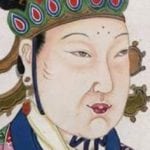 Mysteries
Mysteries  Mysteries
Mysteries  History
History 10 Surprising Stories About the Texas Rangers
 Humans
Humans 10 Philosophers Who Were Driven Mad by Their Own Theories
 Miscellaneous
Miscellaneous 10 Video-Game-Worthy Weapons and Armors from History
 Weird Stuff
Weird Stuff 10 Psychics Who Accurately Predicted Wartime Events
 The Arts
The Arts 10 Pieces of Art Inspired by a Broken Heart
 Health
Health 10 Science Fiction-Sounding New Medical Treatments
 History
History 10 Surprising Facts About the Father of Submarine Warfare
 Space
Space Ten Astonishing New Insights into Alien Worlds
 Weird Stuff
Weird Stuff 10 Bizarre Summer Solstice Rituals Still Practiced Today
 Mysteries
Mysteries Top 10 Haunting Facts About the Ghost Ship MV Alta
 History
History 10 Surprising Stories About the Texas Rangers
 Humans
Humans 10 Philosophers Who Were Driven Mad by Their Own Theories
Who's Behind Listverse?

Jamie Frater
Head Editor
Jamie founded Listverse due to an insatiable desire to share fascinating, obscure, and bizarre facts. He has been a guest speaker on numerous national radio and television stations and is a five time published author.
More About Us Miscellaneous
Miscellaneous 10 Video-Game-Worthy Weapons and Armors from History
 Weird Stuff
Weird Stuff 10 Psychics Who Accurately Predicted Wartime Events
 The Arts
The Arts 10 Pieces of Art Inspired by a Broken Heart
 Health
Health 10 Science Fiction-Sounding New Medical Treatments
 History
History 10 Surprising Facts About the Father of Submarine Warfare
 Space
Space Ten Astonishing New Insights into Alien Worlds
 Weird Stuff
Weird Stuff 10 Bizarre Summer Solstice Rituals Still Practiced Today
10 Harsh Realities Of Growing Up In Ancient China
Although it might be exhilarating to witness life thousands of years ago through a time machine, surely no one would ever want to do much more than visit. The ancient world was a rough and unforgiving playing field, especially if you were a kid or anything but wealthy.
Ancient China was no exception. Unless you were a male born into a wealthy family of high status and influence, you were likely to endure a miserable existence if you managed to live past infancy. China has one of the most elaborate and captivating histories and cultures you may ever study. However, it was still an unbearable struggle just to survive for the majority of people in ancient China.
10 Filial Piety
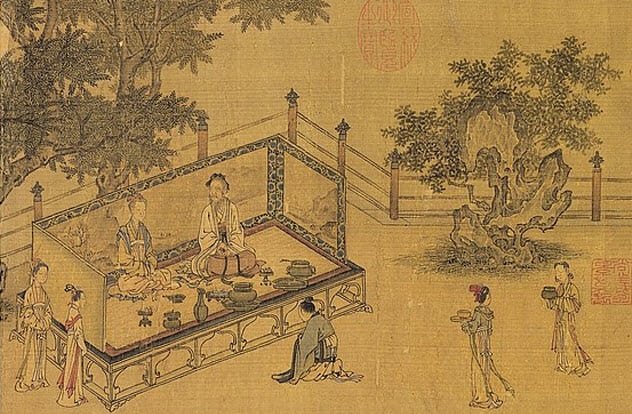
The most fundamental aspect of traditional Chinese culture was “filial piety,” which was taught by Confucius, an influential Chinese philosopher. The teachings of Confucius, specifically through filial piety, developed the established social norms of ancient China.
In a family unit, the father served as the head of the household while the mother’s only role was to honor his orders and birth him a son. If the father was not present, then the eldest son had the authority in the family and his mother had to obey him. The sad truth was that the husband was allowed to abandon the family and remarry if a woman would not bear a son.
The core concepts of ancient Chinese culture also stressed that all people of differing social classes, genders, and ages must perform specific obligatory roles in society and act accordingly. If a father were to act in an abusive manner toward his children, filial piety teaches that they still must return full respect and honor toward him. This occurred because a father’s role was to command, while a child’s role was to obey despite the circumstances.[1]
The same concept applied to an emperor’s ultimate authority in society and the role of citizens under that authority—even if corruption occurred in some dynasties.
9 Access To Education

What is the best way to keep a conforming lower class in place without question?
Limiting access to education, which is believed to be the best weapon against poverty and oppression. Education was an opportunity reserved for the children of the most elite families. Generally, only teenage boys born into very wealthy families had the opportunity to receive schooling. This was the only group with the means to pass highly selective state examinations to gain any political power or say in the world around them.
The curriculum consisted primarily of calligraphy and the teachings of Confucius. Whether educated or not, all people were required to know the five virtues of Confucius by heart when asked at any given moment. It wasn’t until the Han dynasty, which began in 206 BC, that ancient China established a public education system to develop a more intelligent and well-informed society.
Commoners in the empire were presented with more social mobility through an education that prepared them to pass the civil service examinations. Then they had the chance to get a civil service job or earn a more respectable role in society. The establishment of the exams was an effort to allow gifted people to earn political power or influential roles in society on the basis of merit rather than lineage.
However, this opportunity was extremely hard to come by as these exams were highly competitive and difficult. After spending at least a decade or two studying, test takers had to walk in with food, a waste bucket, and test-taking materials. They were confined in small individual cells for three days to complete an exam. No stretching breaks allowed!
There were several levels of testing, beginning with the provincial exams and ending with the national exams that were administered by the emperor only once every three years. All had ridiculously low pass rates. At some points, the chances of passing the tests and getting a decent job could be as low as 1 in 3,000.
In fact, the scholars and prodigies who managed to pass these rigorous exams ended up becoming the names in ancient China that we study in our history books today. If all that isn’t convincing enough that the arduous process of these exams meant business, cheating on them was even punishable by death.[2]
8 Your Job Options
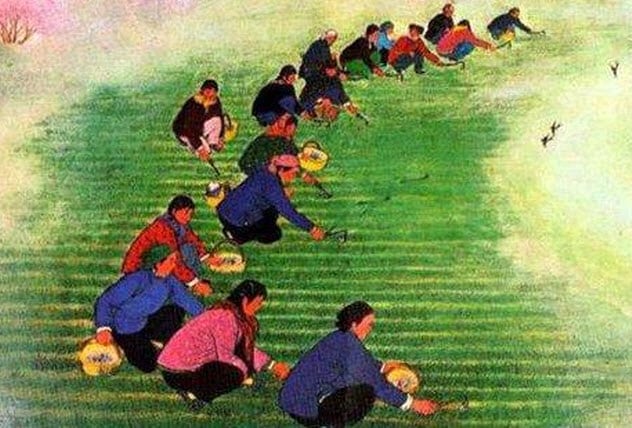
If you were one of the majority born into an impoverished family in a cramped, rusty, tin countryside hut, then working in the rice paddies with no hope of upward social mobility would likely be your life’s destiny. In fact, dedicating your life to backbreaking manual labor in the fields was expected of most men, women, and children in ancient China.
The North primarily grew wheat and millet, while the South specialized in rice. Obviously, the poor mostly lived in the country, while the rich primarily resided in major urban areas with more opportunity. Some families even grew desperate enough to sell off their own daughters as slaves to rich men.
The norm was that only a small minority lived comfortably, and the role of the majority was to maintain the lifestyles of the minority. In fact, many people were not only farmworkers but also servants to wealthy families. These servants were slaves who were eunuchs, and they tended to every need and whim of the rich.
Some wealthy people in ancient China would even grow their nails incredibly long as a status symbol to show that they did not have to work. Everyone else had to keep those nails short and neat because the fields were the sole, inevitable option for most youth growing up in ancient China.[3]
7 Love And Marriage

There weren’t many options when it came to marriage, either. Any intermarriage between individuals of differing social status was forbidden by law. Marriages were arranged by the parents under the wings of hired matchmakers.
Typically, girls in ancient China had to marry at about age 15, while men were about 30. Furthermore, the bride and groom never got to truly meet each other until their wedding day. The transition into marriage for a young daughter barely into her mid-teens must have been tremendously stressful or even traumatic. She had to leave her family and her childhood home and might not see her family again for years.
The bride moved into the family home of her husband and had to obey every command of her mother-in-law. This made marriage especially difficult or even unbearable for women in ancient China. However, they would never be respected as women or in general unless they hadhusbands.[4]
The husband owned everything within the property, including his children and his wife. If he was wealthy, then infidelity was a social norm rather than a taboo.
6 Diet
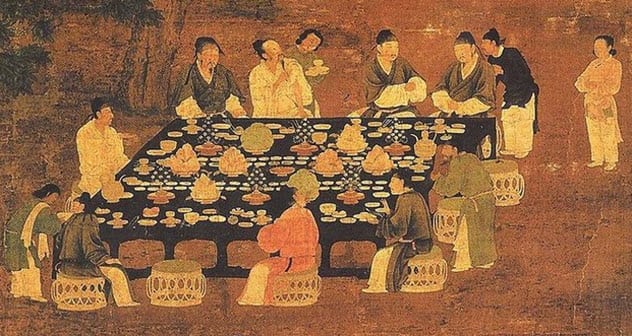
If you were wealthy (especially by working in the bureaucracy after passing the civil service examinations), you would be blessed with a rich diet with meat and vegetables. The rich and influential in ancient China had access to a wide variety of meats, including pork, bear’s paw, and dog. However, they mostly ate fish or rice, the staples of the ancient Chinese diet.
Besides fish, many of the meats in their diet came from a variety of birds, such as goose, pheasant, duck, or chicken. Still, they didn’t eat meat often because the Chinese diet is mostly vegetarian. Therefore, meat was considered a delicacy. Their vegetables included yams, turnips, and more. Other items on the menu could include anything from shark’s fin and edible bird’s nest to soup, millet, or wine.
However, the poor majority in ancient China had a bland, boring diet. Generally, they ate rice or plain noodles without any meat or fish. There were few vegetables in their diet. This led to recurring famines during periods of drought in the countryside.[5]
5 Leisure And Tradition

Leisure and traditional events and practices were an integral part of Chinese culture. Some of the most popular pastimes, especially for young people, were mahjongg, archery, kickball, and checkers.
Chinese culture also emphasized honoring one’s ancestors. Therefore, those who practiced Taoism, the widespread religion of ancient China, would worship their ancestors. They also believed in a kitchen god named Zao Shen and kept a paper image of him in the house. It was taught that this god would protect the family and report their demeanor to heaven every month.
Whenever Zao Shen delivered his report to the heavens, the family would burn the image and set off firecrackers to send him on his way. They also smeared the lips on his image with honey so that he would take a good report to heaven. While Zao Shen was away, the family would be careful to avoid doing anything that was believed to attract evil spirits or entities.
Large festivals were also a significant part of the leisure aspect of life in ancient China. The Lantern Festival and Chinese New Year were some of the most important events of the year.[6]
4 Got Health Care?
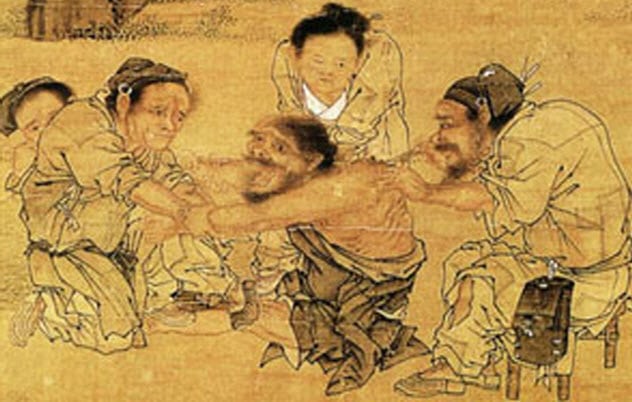
If you were lucky or wealthy enough to have access to any medical care, the doctors of ancient times were in no way like modern practitioners. In ancient history, people usually had religious or philosophical explanations for illness. It was believed that illness was caused when a person was possessed by evil spirits or ghosts.
Therefore, doctors in ancient China were usually priests or mystics who performed exorcisms with little to no medical expertise. If that didn’t help, these doctors would turn to herbal remedies or acupuncture to treat their sick patients. This made herbal tea especially common.[7]
3 Slavery
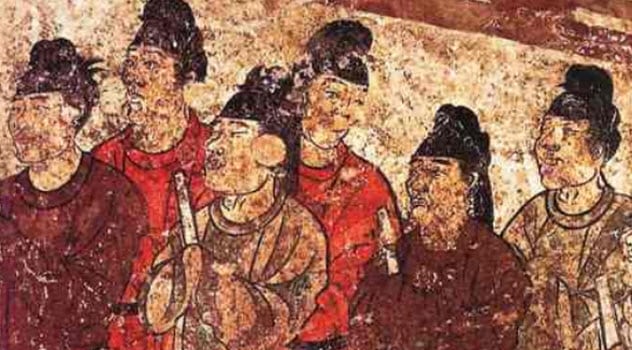
The sad reality was that much of the ancient Chinese population was made up of slaves. For most, slavery was the only option or destiny from the moment they were born. As mentioned earlier, the majority of job opportunities consisted of manual labor in the fields, but some of the workers were freemen.
Slaves lived under the absolute rule of a master, and they were often prisoners or captives of war. Many slaves were children who worked as domestic servants for wealthy households. As mentioned earlier, these servants were slaves who were eunuchs.
A eunuch entering any room in a house unannounced or uninvited was punished by death. An especially heinous slavery practice in ancient China occurred whenever a slave master died. His slaves were buried alive due to the belief that they must serve their master in the afterlife for eternity. Thousands of slaves were also used as human sacrifices—usually by decapitation—to prevent rebellion by inciting fear in other slaves.
Fortunately, the practice of killing slaves upon the death of the master was brought to an end during the Zhou dynasty, which began in 1046 BC. Government efforts in China to end slavery began during the Ming dynasty, which started in AD 1368. However, many people continued to secretly own slaves in remote regions of China until as late as the early 1950s.[8]
2 Foot Binding
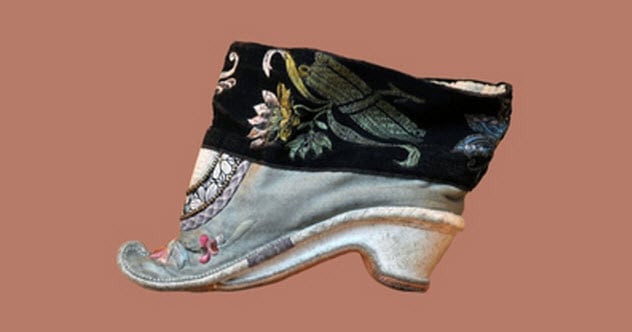
In ancient China, having very small feet was believed to be a highly desirable and attractive trait in a woman. The practice of foot binding was adopted by the upper class during the Tang dynasty.
When a girl was around four or five years old, her feet would be wrapped in bandages tight enough to forcibly break and curl her toes into the soles of her feet. This prevented the toes from growing.
It was an excruciating process, and the girl would have to walk on broken toes for the rest of her life. While enduring unbearable pain and extremely limited mobility, she was confined to indoor domestic work and a miserable existence.[9]
In fact, a girl could risk being beaten if she was caught trying to remove the bandages around her feet. The twisted practice of foot binding wasn’t outlawed until 1912.
1 The Coming Of Age
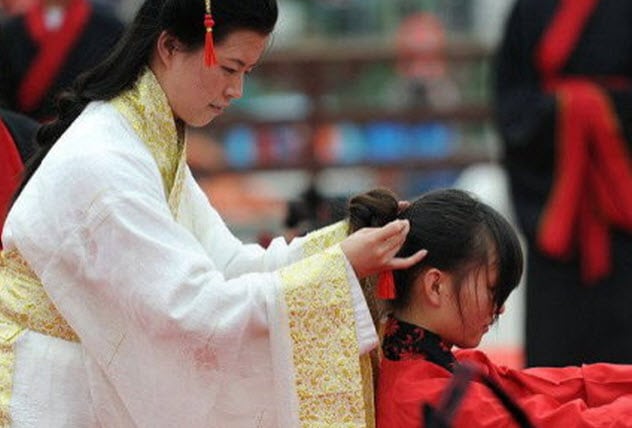
If born in ancient China, one was lucky to reach young adulthood. As boys were valued much more than girls, newborn baby girls were sometimes abandoned or drowned. This was considered socially acceptable, which made the infant mortality rate fairly high. Other factors such as poverty, lack of education, slavery, and famine made an individual exceptionally lucky to reach adulthood.
However, both men and women received individual ceremonies commemorating their initiations into adulthood. This ritual was generally hosted by the father, who delivered a speech welcoming the young adult into a new chapter of his life. A young man would have his “capping ceremony” at age 20, while a young woman would receive her “hair-pinning ceremony” at age 15.[10]
Read more crazy stories about ancient China on 10 Crazy Stories About The Rulers Of Ancient China and 10 Insane But Brilliant Ways Ancient China Fought Its Wars.







